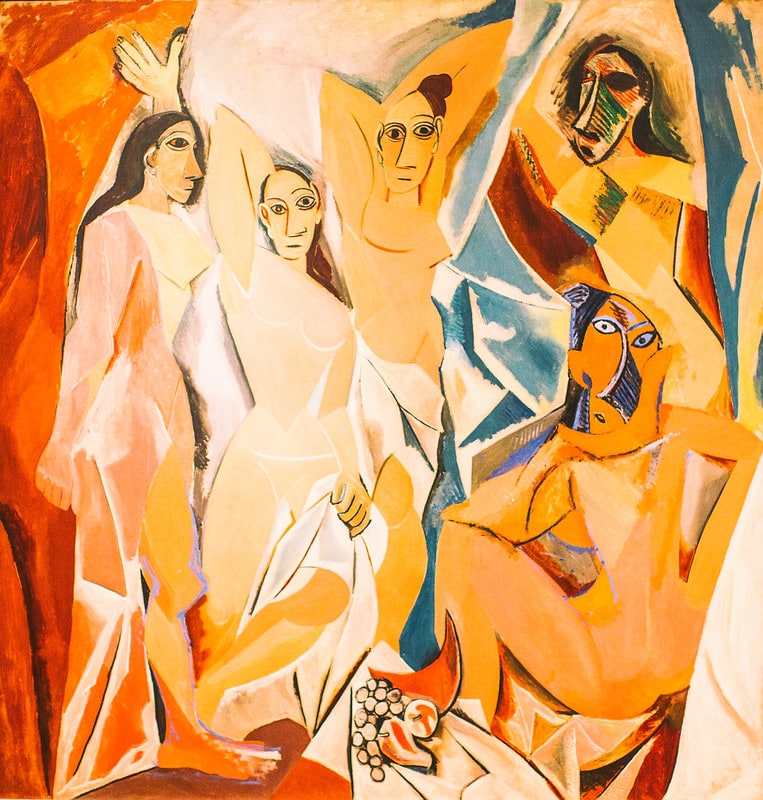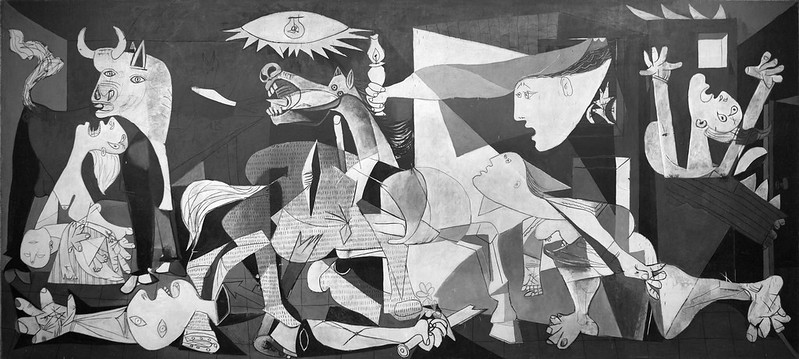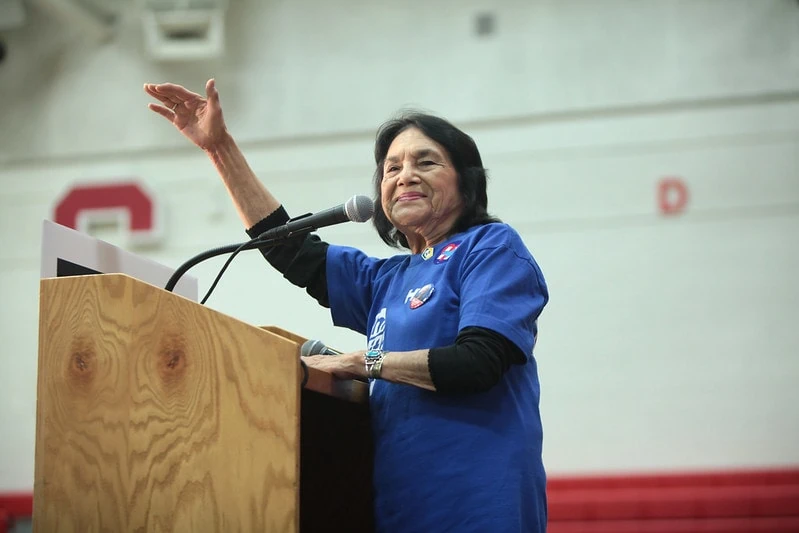10 Fast Facts About Pablo Picasso and HIs Most Famous Paintings (Plus Lesson Plans)
Inside: Learn facts about Pablo Picasso, see the most famous Picasso paintings, quotes, and lesson plans for teachers.
Pablo Picasso is among the most important and beloved artist of all time.
His influence in 20th century art cannot be overestimated, as the co-creator of Cubism and pioneer of modern art as we know it.
From PabloPicasso.org,
“There had been no other artists, prior to Picasso, who had such an impact on the art world, or had a mass following of fans and critics alike, as he did.”

This post gives you a quick introduction to Picasso’s life and work, as well as resources for a deeper dive to learn more.
There’s a lot, so here’s an index of what’s included in the post. You can click on any link to jump straight to that section:
1. Pablo Picasso Facts
2. Pablo Picasso Famous Paintings
3. Pablo Picasso Lesson Plans for Teachers
4. Pablo Picasso Children’s Books
5. Videos About Pablo Picasso
10 Fast FActs About Pablo Picasso
Birth:

October 25, 1881 in Málaga, Spain
Parents:
José Ruiz Blasco and María Picasso López. His father, Ruiz, was also a painter and teacher.
Education:
Picasso began studying with his father at age 7. He formally studied at a few art schools in both Spain and France but he did not like school and was often put into detention. Picasso stopped his formal studies in 1899.
Art:
Picasso was not just a painter. He produced sculptures, pottery, ballet sets, poetry, drawings, and more.
He is famous for Cubism: using cube shapes in his work, or taking shapes apart and putting them back together in a different way. His experiments in collages were very influential as well.
Painting Periods:
Several distinct styles and stages are apparent in Picasso’s art.
Though his work began in his childhood, here is a rough outline of the commonly agreed-upon periods of his painting:
- The Blue Period (1901 – 1904)
- The Rose (Pink) Period (1904 – 1906)
- The African Period (1907 – 1909)
- Cubism, Analytic and Synthetic (1909 – 1919)
- Neo-Classicism (1919 – 1928)
- Surrealism (1925 – 1930’s)
- Later Work
Legacy:
Picasso is considered one of the most prolific painters of all time. He produced over 145,000 works, which include more than 13,000 paintings. He is also credited as the originator of Cubism with Georges Braque.
Children and Spouses:
Picasso was married twice and had four children: Paul, Maya, Claude, and Paloma.
Death:
Picasso died April 8, 1973 in Mougins, France.
Fun Facts:
Picasso’s first word as a baby was piz, from lápiz— the Spanish word for pencil.
His talents for art were obvious even as a child. His father declared he would stop painting when Picasso’s pre-teen paintings were better than his own.
Here is a painting Picasso did of his mother, at only 15 years old. You can see his obvious talent and classical training:
11 Pablo Picasso Famous Paintings
1. The Old Guitarist, 1903

2. Boy With A Pipe, 1905

3. Family of Saltimbanques, 1905

4. Les Demoiselles d’Avignon, 1907

5. Ma Jolie, 1911

6. Three Musicians, 1921

7. Girl Before a Mirror, 1932

8. The Weeping Woman, 1937

9. Portrait of Dora Maar, 1937

10. Guernica, 1937

11. Jacqueline with Flowers, 1954

Pablo Picasso Lesson Plans
Free Resources in English:
- Printable page for students to read about Picasso and do a written response, with discussion questions for teacher-led conversation (middle school).
- Printable PDF word search for terms related to Pablo Picasso
- 1-page Picasso biography with questions (middle school)
- Inferential reading activity and craftivity about Picasso craftivity (elementary)
- Printable board game to review some information about Cubism
Free Spanish Resources from TpT:
- Creative printable worksheet for recording facts about Pablo Picasso (upper elementary – middle school).
- This is an adorable printable personality test for students to read in Spanish and decide which famous Spanish-speaking artist they are most life (middle – high school).
- Picasso Escape Room Bonus Puzzle for studying different painting (digital and printable).
- Slideshow for introducing students to Picasso and Guernica, for novice-level Spanish learners.
- This is a brilliant way to review body parts in Spanish and Picasso paintings – BUT, the creator included paintings that include (abstract) nudity. It’s such a creative idea I wanted to link to it, but be sure to preview to see which parts you can use. Link here.
You can also check out these bundles for learning about famous Spanish-speakers:
Pablo Picasso Art Projects for Kids
What better way to learn about Pablo Picasso than through art? There are many free activities out there, and these were my favorites.
“Every child is an artist. The trouble is how to remain an artist once he grows up” – Pablo Picasso
- Step-by-step directions and lesson for teaching kids how to draw a cubist-style face like Picasso (elementary).
- Picasso’s Mains aux Fleurs activity. Includes free printable hand printouts, to be used with cut out construction paper.
- Three Musicians Collage (ages 10-12).
This project gives tribute to Picasso’s famous painting and his usage of collages, using cut-outs of paper. - Picasso-Inspired Self-Portraits (uses watercolors and oil pastels on white paper).
- Color and Emotions: Picasso Portraits. These portraits explore emotion and color, and can work with young elementary students.
- Collage Self-Portraits, created by mixing cut-out paper and cut-out from magazines. There are great pictures to help you see exactly what to do!
- Rooster Chalk Art Inspired by Picasso’s Rooster Painting (uses black paper, oil pastels, and chalk).
- Free Printable of Several Picasso works, for coloring:
– Picasso’s 1907 Self-Portrait
– The Old Man with the Guitar
– Boy With a Pipe
– Three Musicians - More free printable for Picasso coloring pages, including a print of Guernica.
Pablo Picasso Children’s Books
Videos About Pablo Picasso
There are quite a few well-done YouTube videos with facts about Pablo Picasso for kids to adults. Some are almost an hour in length, but here are some of my top choices for shorter videos!
Pablo Picasso for Young Students:
This video briefly introduces Picasso to kids in English, and then demonstrates a collage activity for children.
What Is Cubism?
This is a fantastic fast-paced, illustrated intro to Cubism for kids, showing two forms of cubism in action (5min 25s).
Another school-friendly Pablo Picasso biography:
This includes lots and lots of images of Picasso’s most famous paintings and other works (4min 16s).
For middle – high school:
A thorough yet concise exploration of Picasso’s life and art, in Spanish. It does contain some works that portray nudity, though nothing graphic (6min 23s).
Draw My Life Picasso Biography in Spanish:
Another summary of Picasso. This one does include some nudity as well, though as part of the cartoon drawings of his paintings. (6min 36s).
I hope these resources were helpful to you! If you have more ideas for resources or lessons, let me know in the comments below!
Image Sources:
Image 2: “s-pablo-picasso-large640” (CC BY-NC 2.0) by CyberHades
Image 3: “Self-Portrait with Palette [1906]” (CC BY-SA 2.0) by NichoDesign
Image 4: “Picasso, The Old Guitarist” (CC BY-NC-SA 2.0) by profzucker
Image 5: “Boy with a Pipe [1905]” (CC BY-SA 2.0) by NichoDesign
Image 6: “Family of Saltimbanques” (CC BY-NC 2.0) by Thomas Hawk
Image 7: “Les Demoiselles d’Avignon” (CC BY-NC 2.0) by Thomas Hawk
Image 8: “NYC – MoMA: Pablo Picasso’s ”Ma Jolie”” (CC BY-NC-ND 2.0) by wallyg
Image 9: “Picasso Three Musicians” (CC BY-NC-ND 2.0) by Sassholes
Image 10: “Girl Before a Mirror” (CC BY-NC 2.0) by Thomas Hawk
Image 11: “Weeping Woman” (CC BY-NC 2.0) by lluisribesmateu1969
Image 12: “IMGP2299” (CC BY-NC-ND 2.0) by dvdbramhall
Image 13: “Picasso – «Guernica»” (CC BY-NC-ND 2.0) by magal (Manuel Galrinho)
Image 14: “Jacqueline with Flowers” (CC BY-NC 2.0) by lluisribesmateu1969










